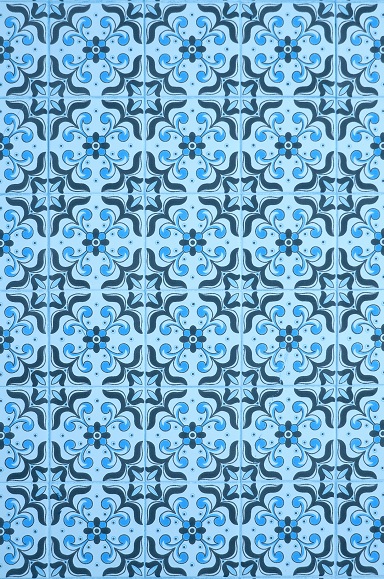Portuguese ceramic floor, wall and roof tiles are an attractive addition to almost any part of a building or home. To find out more read our guide for facts & information…
Although ceramic tiles are typically used for practical purposes such as covering roofs, floors, walls, showers, or other objects such as tabletops, Portuguese ceramic floor, wall and roof tiles are distinguished and highly prized for both their quality and their beauty.
Portugal’s tradition of tile making and design is in evidence throughout the land. Since the time that the Moors ruled the Iberian Peninsula it has been natural to utilize the stone that is found in abundance to cover almost every interior or exterior surface imaginable. In fact, the word azulejos that describes the distinctive hand-painted blue and white tile is derived from the Arabic word az-zulayj, meaning “polished stone”.
This has led to the widespread notion that the Moors of Spain and Portugal were the first people to conceive of tiles as an almost universal surface covering. Regardless of its provability the evidence of such activity in Portugal dates from the 14th century.
Over time the tiles of Portugal have taken on the geometry common to Islamic creations, the sublimity in evidence from Chinese porcelain and the deft Delft-like patterns and colors from the Netherlands and made a truly Portuguese art form in all its beauty and practicality.
In general in Portugal, the industry can draw on several hundred years of construction history with ceramics. The variety of Portuguese ceramics is rich and the Portuguese construction industry has made significant contributions to development. The Ceramic Industry Association of Portugal can be divided into five distinct product lines, namely, building ceramics, floor and wall tiles, sanitary ceramics, functional and decorative ceramics and special ceramics. Although each product line has its own different characteristics, they utilize raw materials that are much the same.
Modern Portuguese manufacturers of distinctively Portuguese ceramic floor, wall and roof tiles have adapted their creations and products to serve the needs and requirements that are a part of modern building construction. They have invested huge sums in research and development so that their products can withstand the elements over time as well as changes in aesthetic preferences.
Their 21st century products can be utilized in a wide variety of applications, from extremely durable exterior cladding to decorative interior tiling.
Advances in construction techniques may well have contributed to the epic nature of some of the ways ceramics have been applied in architecture. A prime example is Maria Keil’s grand series of works comprised of large abstract panels in nineteen stations of the Lisbon Underground which were implemented over a period of 25 years. These works inspired both a revival and an updating of the art of the azulejo, which had gone into a period of decline. Her work found in the station Intendente, in particular, is widely regarded as a masterpiece of modern tile art.





